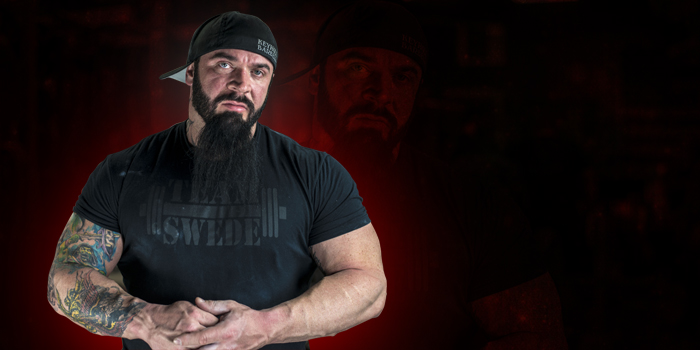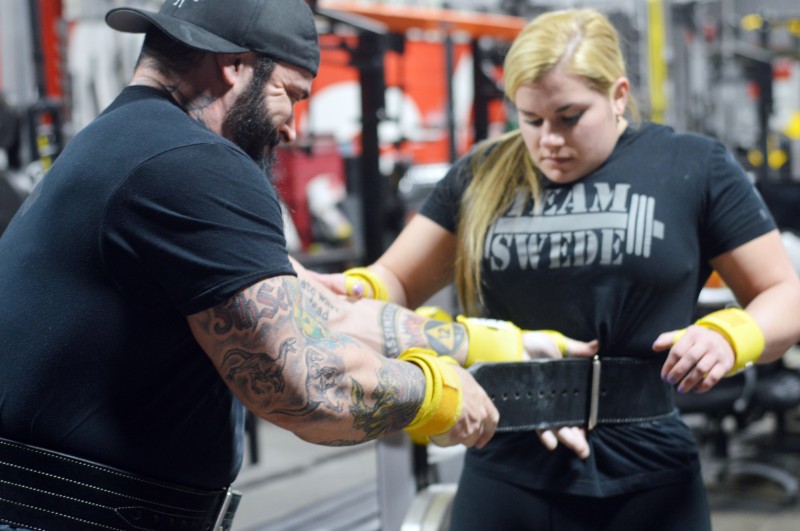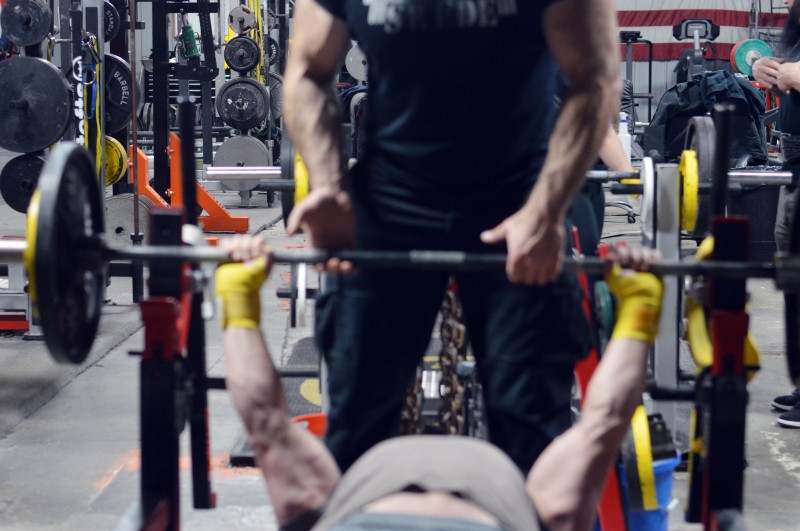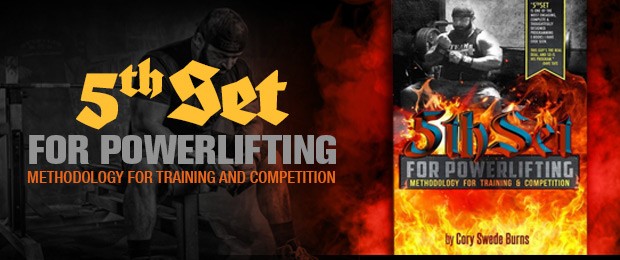
I've always been very results-oriented. I might not always enjoy the means that bring me to a desired end, but I will suffer through just about anything to get what I want. That holds true for business, personal relationships, and absolutely for training.
When it comes to training, it is important to me that I understand the mechanisms a certain protocol works on, but only because that can help me refine and perfect it, according to whatever I am trying to accomplish. With that said, there have been times throughout my career when I was convinced that a type of training was effective based merely on my own experiments and observations of what others had tried, but I was really unable to offer anything more than educated guesses as to how and why it was working.
Very high rep training is a good example of one of those times. With the widespread success of lifters employing the 5thSet methodology, I'd say I was right to be convinced.
WATCH: Training Camp Q&A — Overtraining, Openers, and Body Composition
Being one of the (if not the) first in my field to incorporate these protocols into a systemized method of training, it makes sense that I get a lot of questions about how this type of stimulus is causing the hypertrophic (and other) adaptations that it does. As far as the stimulus mechanisms, the best logical answer I can offer is that is probably a combination of mechanical and metabolic stress. That, in my opinion, is the least interesting aspect of this type of training.
Far more interesting is that it seems to be at least as effective (if not more effective) than training in traditional rep ranges for hypertrophy, while at the same time remaining far less expensive in terms of recoverability. I am speaking about the tried and true "Very High Rep" protocol, which is to be used on the second pressing day of the 5thSet method, when I say that. But both of these factors appear to remain true, possibly even more so, when it comes to the new "AMRAP for Time" (as many rounds as possible) protocols I have been experimenting with over the last year at Keyhole Barbell and with some remote clients. There are some caveats regarding the new protocols, but we will get into that in a bit.
The question which is almost definitely ringing in your mind right now is "how can something stimulate more adaptation and require less recovery?"
The answer: I do not fucking know.
Logically, metabolic stress is a reasonable very general answer and one I am fine with giving at this point.
Research follows practice and the quest to discover why this stuff works has already begun in the scientific community. I believe Brad Schoenfeld (among others) is trying to put together some research which will hopefully suggest the most likely mechanisms behind what is going on with this, but I stay in my lane and that is not it.
What I need to know is what works and how to practically apply it. I have arguably the largest and most valid set of data to determine those things for my purposes. So until I have reason to believe otherwise, I'm going to go with what the information I have tells me. I keep meticulous records of everything and have a larger sample size to play with than maybe anyone.
Confirmation bias is a consideration, of course. It's possible that I am just finding what I am looking for. I do my best to remain neutral and go with what my experiments suggest. Sometimes that means ditching a protocol entirely. Other times things look really good and the more I run them with different lifters, the more I learn, and the better they begin to look.
RECENT: Wish They Could All Be California Meets
I think we can all agree that if someone figured out a cohesive protocol which allowed a lifter to integrate this type of training (rounds for time) into a powerlifting template, that would be pretty cool. I've tested and developed a few, actually, and I am going to share one with you in this article.
"AMRAP for Time" probably sounds familiar to some of you. I won't say names, but this concept is used in another method of training which is riddled with overuse injuries. In my opinion, that phenomena is due purely to a ham-handed application of otherwise useful methods — the whole "how to practically apply it" thing I am always harping on about. Wait for the caveats, they are coming.
It's interesting, the fact that this nameless discipline is full to the hilt with very jacked females, who have inherently less adaptability in terms of hypertrophy than their male counterparts. I'm not drawing any conclusions, but it's noteworthy.
I know first hand that bodybuilders like Craig Titus were using similar training protocols to build champion physiques twenty years ago. His explanation of how it worked was almost certainly not correct. Yet, it did work. We have known that this stuff works for a long time. That's not really in question. To argue that would be silly, I think. The question is again: how do we apply it?
For any of you who don't know, I am working on an updated version of the 5thSet methodology, which will be roughly double the length of the first very complete version. There will be a wealth of additional information and templates and all of the new protocols we've been working on as well. The one I am sharing with you here is one of my favorites and has been shown to be among the most effective.
The results among those of us at keyhole and around the country who have applied it? I'm generalizing here but, our arms got a lot bigger.
I chose to go with single joint arm movements to test these protocols for a number of reasons, which I will cover in greater depth in the book, not the least of which being that we started the testing with compound movements and the results were less than favorable, across the board.
And allow me to suggest that you not be one of the people who makes less of arm training. I can picture some geeks out there rolling their eyes about now.
I mean who really doesn't want big arms? No one. It's always people with skinny arms and heads shaped like penises who get mad about arm training and espouse some platitude about how squats fix everything. And usually they can't squat for shit. But I digress.
Instead of getting mad, just try doing what I'm telling you here. It will serve as a life lesson and you'll probably end up looking like less of a wiener.
Moving on, the caveats:
1. This protocol should only be used for single-joint movements.
Just trust me on this for now. It should be enough for me to tell you that compound movements are too taxing, and when performed in this manner they will interfere with your main work. There is more to it than that, but if I write another 4000 word article Jordan will stab me. I promise to go into more detail in the book, though.
2. This protocol should only be performed as the last movement in a training session and in order to add it in, you must take something else away from what you are already doing for the target muscle in question. For example if you are running a 5thSet template, you could replace the isolation movement on either pressing day with this protocol.
I recommend starting with including these only one day per microcycle.
There are some exceptions, but stick to the script here if you're going to try this out. It's for your own good.
3. Beginners (<1-3 years lifting): This is not intended, nor is it necessary, for you. You will respond to and benefit from standard hypertrophy protocols for a long time. If you stick with lifting for enough years, you will reach a point where that stuff no longer cuts it. Save this for then.
4. Do not use this protocol during a peaking cycle for a powerlifting meet.
And without further ado, the protocol:
As I said before, there are a bunch of these we have been testing for the last year and are still using where they are appropriate. This particular protocol can be used for any type of triceps extension or bicep curl. Cables and constant tension devices seem to work best, but we have also done cycles with dumbbells and EZ curl bars.
The protocol:
- Start with a weight that is an RPE of around 5-6 for 25 reps. So, pretty easy.
- After 30-45 seconds rest, or if working with a partner, immediately after the partner finishes, add a measure of weight which brings the RPE into the 6-7 range for 25 more.
- After another 30-45 seconds break, or after your partner does another round, add a final measure of weight which brings the RPE to a solid 8. This is the first real working set and it is when the clock starts for ten minutes of misery.
- Repeat with the same weight for as many sets as possible in ten minutes. Use a stop watch with an alarm if possible. If you are unable to continue performing for the full ten minutes, lower the working weight for the next session.
- Irrespective of how long it takes to complete the 25 reps, or if you are even able to complete them without taking a break, take the least amount of time possible to rest between sets.
If you are working with a partner, push them to finish each set quickly. I've included a video of Mike Flowers and I doing one of our twice per microcycle sessions with this protocol for a tricep extension variation. If you watch it, you'll see me drag him through the mud and keep pushing him toward the end. The psychological component of working with someone on these should not be undervalued. I don't know about you, but I am not going to let someone outperform me if I can help it. Obviously the partner should be in the area of your level of strength.
It's a good idea to change the devices and grips you use on these often because it provides a stimulus variable and specificity is not a consideration for this type of movement.
An interesting phenomenon I've noticed with these is that sometimes lifters will start to fail completely, before reaching their 25 reps for a few sets, about half way through the ten minutes. Then, out of nowhere, they will rally and start increasing the number of repetitions they are able to complete per set and eventually get all 25 again. I've seen this same thing with a good portion of the total lifters I have using this protocol.
So, let's review.
- 25 reps at RPE 5-6
- Rest 30-45 seconds or duration of partner's set.
- 25 reps at RPE 6-7
- Rest 30-45 seconds or duration of partner's set.
- 25 reps at RPR 8
- Rest 30-45 seconds or duration of partner's set and repeat with the same weight for ten minutes straight.
Who is going to benefit from this? The new protocols are intended for expert level lifters. I said earlier in the provisos, anyone beyond their first few years of training can try it, but I would stick with just the "very high rep" protocol on the second pressing day in the original book, until you need this. That protocol is great for beginner through expert.
How much of a difference will it make? I would say it seems like between 5-10% more hypertrophy than not doing it, for advanced lifters already using conventional means of hypertrophy training. So, a good bit. That's an estimate. Depending on where you are in the bell curve, you're results may be dramatically different, but probably no more than 10% of the total stimulus either way.
I hope you all kick ass with this protocol. Let everyone know where you got it when you do. Feel free to keep good records and share your experience with me. And be sure to keep an eye out for the new 5thSet book, which will drop later this year.
As always, please share this if you enjoyed it!













1 Comment